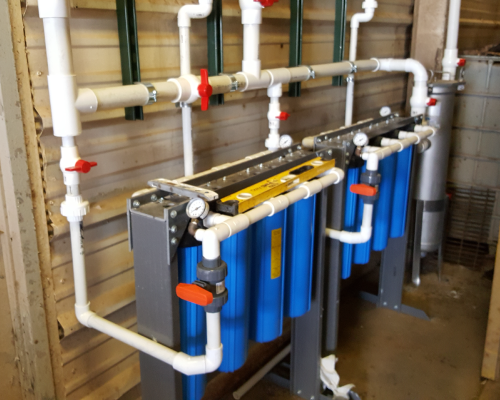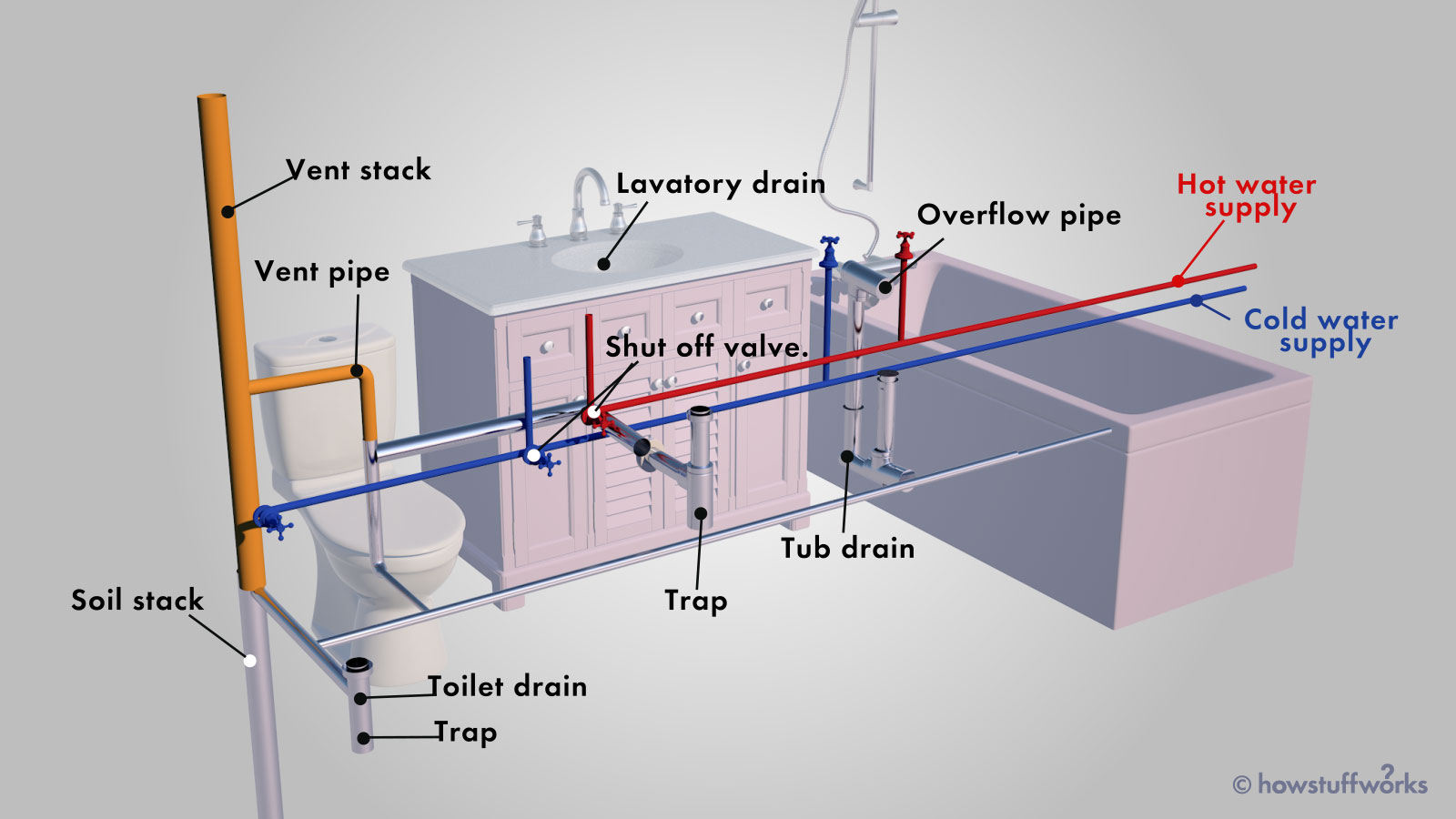Understanding Your Property's Plumbing System Anatomy
Understanding Your Property's Plumbing System Anatomy
Blog Article
Were you looking for tips about Exploring Your Homes Plumbing Anatomy?

Understanding just how your home's pipes system works is necessary for each property owner. From delivering tidy water for alcohol consumption, food preparation, and bathing to safely removing wastewater, a well-maintained pipes system is important for your family members's health and convenience. In this detailed overview, we'll check out the elaborate network that comprises your home's plumbing and deal suggestions on maintenance, upgrades, and taking care of common concerns.
Introduction
Your home's plumbing system is more than simply a network of pipes; it's an intricate system that ensures you have accessibility to clean water and reliable wastewater removal. Knowing its components and how they interact can assist you prevent costly fixings and ensure every little thing runs efficiently.
Standard Components of a Plumbing System
Pipes and Tubes
At the heart of your plumbing system are the pipelines and tubing that lug water throughout your home. These can be constructed from various materials such as copper, PVC, or PEX, each with its advantages in regards to resilience and cost-effectiveness.
Fixtures: Sinks, Toilets, Showers, etc.
Fixtures like sinks, bathrooms, showers, and bath tubs are where water is made use of in your house. Understanding exactly how these fixtures link to the plumbing system assists in identifying troubles and intending upgrades.
Shutoffs and Shut-off Factors
Valves manage the flow of water in your pipes system. Shut-off valves are vital throughout emergency situations or when you need to make repair work, enabling you to separate parts of the system without interfering with water circulation to the whole residence.
Water Supply System
Main Water Line
The main water line links your home to the local supply of water or a personal well. It's where water enters your home and is dispersed to different fixtures.
Water Meter and Stress Regulatory Authority
The water meter procedures your water use, while a stress regulatory authority makes sure that water moves at a safe pressure throughout your home's plumbing system, avoiding damage to pipes and fixtures.
Cold Water vs. Hot Water Lines
Comprehending the distinction between cold water lines, which provide water straight from the major, and warm water lines, which bring heated water from the water heater, assists in fixing and planning for upgrades.
Drainage System
Drain Pipes Water Lines and Traps
Drain pipes carry wastewater far from sinks, showers, and bathrooms to the sewer or septic tank. Traps prevent sewage system gases from entering your home and likewise trap particles that might create clogs.
Air flow Pipelines
Ventilation pipelines enable air into the water drainage system, stopping suction that could reduce drain and create traps to vacant. Appropriate ventilation is crucial for maintaining the honesty of your plumbing system.
Importance of Correct Drain
Ensuring appropriate drainage stops backups and water damages. Frequently cleaning drains pipes and maintaining traps can protect against pricey repair work and prolong the life of your pipes system.
Water Heating System
Sorts Of Hot Water Heater
Water heaters can be tankless or typical tank-style. Tankless heating units heat water as needed, while tanks store warmed water for prompt usage.
Upgrading Your Plumbing System
Factors for Updating
Upgrading to water-efficient components or replacing old pipelines can boost water quality, decrease water costs, and boost the worth of your home.
Modern Plumbing Technologies and Their Advantages
Check out technologies like wise leakage detectors, water-saving toilets, and energy-efficient hot water heater that can save cash and decrease ecological effect.
Expense Considerations and ROI
Compute the upfront prices versus long-lasting financial savings when considering plumbing upgrades. Several upgrades pay for themselves via lowered utility expenses and less repair services.
How Water Heaters Connect to the Pipes System
Understanding exactly how water heaters connect to both the cold water supply and hot water distribution lines assists in detecting issues like inadequate hot water or leakages.
Upkeep Tips for Water Heaters
Regularly flushing your water heater to remove sediment, checking the temperature settings, and inspecting for leakages can prolong its life expectancy and enhance power effectiveness.
Usual Pipes Issues
Leaks and Their Causes
Leakages can take place due to aging pipelines, loose fittings, or high water stress. Addressing leakages promptly protects against water damage and mold growth.
Clogs and Obstructions
Clogs in drains and toilets are frequently caused by flushing non-flushable items or a buildup of oil and hair. Making use of drainpipe displays and bearing in mind what drops your drains pipes can avoid blockages.
Indications of Pipes Issues to Watch For
Low water stress, sluggish drains, foul odors, or uncommonly high water expenses are indications of prospective plumbing problems that should be addressed promptly.
Plumbing Upkeep Tips
Normal Evaluations and Checks
Schedule annual plumbing examinations to catch issues early. Look for indicators of leakages, rust, or mineral accumulation in taps and showerheads.
Do It Yourself Upkeep Tasks
Straightforward jobs like cleaning faucet aerators, checking for commode leakages utilizing dye tablets, or insulating revealed pipelines in cold climates can prevent significant pipes issues.
When to Call a Professional Plumber
Know when a plumbing issue calls for specialist proficiency. Attempting complex repairs without proper expertise can cause more damage and greater fixing prices.
Tips for Decreasing Water Usage
Simple behaviors like dealing with leaks quickly, taking shorter showers, and running full lots of washing and meals can conserve water and lower your energy bills.
Eco-Friendly Pipes Options
Think about sustainable plumbing materials like bamboo for flooring, which is durable and environment-friendly, or recycled glass for counter tops.
Emergency Readiness
Actions to Take During a Plumbing Emergency situation
Know where your shut-off valves lie and exactly how to switch off the water system in case of a burst pipeline or significant leak.
Relevance of Having Emergency Contacts Convenient
Keep contact info for local plumbing professionals or emergency services conveniently available for fast response throughout a plumbing situation.
Environmental Impact and Conservation
Water-Saving Fixtures and Home Appliances
Mounting low-flow faucets, showerheads, and toilets can considerably minimize water usage without giving up performance.
Do It Yourself Emergency Fixes (When Applicable).
Short-lived repairs like using air duct tape to spot a leaking pipe or putting a pail under a leaking faucet can lessen damage until a specialist plumber gets here.
Final thought.
Understanding the composition of your home's plumbing system equips you to keep it successfully, conserving money and time on repairs. By adhering to routine upkeep routines and staying notified concerning contemporary plumbing modern technologies, you can ensure your pipes system operates effectively for years ahead.
Exploring Your Homes Plumbing Anatomy
Water Supply System
Main Water Line: This is where water enters your home from the municipal supply or a private well. Water Meter: Typically located near where the main water line enters the property, it measures the amount of water used. Shutoff Valve: It s crucial to know where this is in case of emergencies. It allows you to turn off the water supply to the entire house. Pipes and Fittings: These distribute water throughout your home. Materials can include copper, PVC, or PEX. Drain-Waste-Vent (DWV) System
Drains: Located in sinks, showers, and tubs, these carry wastewater away. Traps: U-shaped pipes under sinks that hold standing water, blocking sewer gases from entering the home. Vents: Pipes that lead from the DWV system to the outside, preventing vacuum formation and allowing gases to escape. Sewer Line: Carries all wastewater from the home to the municipal sewer system or a septic tank. Fixtures and Appliances
Sinks, Toilets, and Showers Dishwashers and Washing Machines Water Heaters Maintenance Tips
Regularly check for leaks in exposed pipes and around fixtures. Inspect the water heater annually for signs of wear. Clean drains and traps to prevent clogs and odors. Know how to shut off water to individual fixtures. When to Call a Professional
Major leaks or burst pipes Installation of new pipes or fixtures Septic tank issues Remodeling projects that involve plumbing changes Conclusion
Understanding the anatomy of your home's plumbing is key to maintaining a functional and efficient system. Regular checks and knowing when to call in the experts can save you time, money, and stress.
https://www.mavyn.com/blog/exploring-your-homes-plumbing-anatomy

Hopefully you enjoyed our topic on Plumbing Installation 101: All You Need to Know. Many thanks for taking the time to read through our content. Remember to take a moment to distribute this blog posting if you appreciated it. Thanks for taking the time to read it.
Recurring Service Plans Report this page